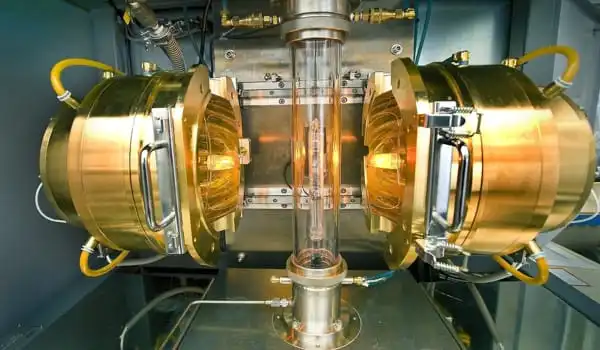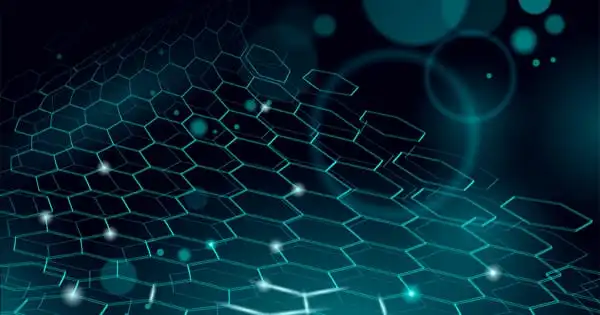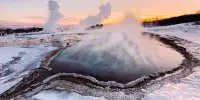Scientists have been working tirelessly to understand the fundamental mechanisms underlying high-temperature superconductivity, with the ultimate goal of designing and engineering new quantum materials that are superconducting close to room temperature.
High temperature superconductivity is something of a holy grail for quantum material researchers. Superconductors, which conduct electricity without losing energy, have the potential to revolutionize our energy and telecommunications systems. Superconductors, on the other hand, typically operate at extremely low temperatures, necessitating elaborate freezers or costly coolants. As a result, scientists have been working tirelessly to understand the fundamental mechanisms underlying high-temperature superconductivity, with the ultimate goal of designing and engineering new quantum materials superconducting close to room temperature.
Fabio Boschini, Professor at the Institut national de la recherche scientifique (INRS), and North American scientists used time-resolved resonant x-ray scattering at the Linac Coherent Light Source (LCLS) free-electron laser, SLAC, to study the dynamics of the superconductor yttrium barium copper oxide (YBCO), which offers superconductivity at higher-than-normal temperatures (US). The findings were published in the journal Science. Researchers were able to track how charge density waves in YBCO react to a sudden “quenching” of superconductivity caused by an intense laser pulse in this new study.
This work is meaningful for a variety of reasons, but it also emphasizes the importance of forming long-lasting, meaningful collaborations and relationships. Some projects take a long time, and we got here thanks to Giacomo’s leadership and perseverance.
MengXing Na
“We are learning that charge density waves — self-organized electrons behaving like ripples in water — and superconductivity are interacting at the nanoscale on ultrafast timescales. There is a very deep connection between superconductivity emergence and charge density waves,” says Fabio Boschini, co-investigator on this project and affiliate investigator at the Stewart Blusson Quantum Matter Institute (Blusson QMI).
“Researchers underestimated the importance of the dynamics inside these materials until a few years ago,” said Giacomo Coslovich, lead investigator and Staff Scientist at the SLAC National Accelerator Laboratory in California. “We didn’t have the tools to assess the charge density wave dynamics in these materials until this collaboration came together. The ability to examine the evolution of charge order is only possible because of collaborative efforts like ours, as well as the use of a free-electron laser to provide new insights into the dynamical properties of matter.”
Owing to a better picture of the dynamical interactions underlying high-temperature superconductors, the researchers are optimistic that they can work with theoretical physicists to develop a framework for a more nuanced understanding of how high-temperature superconductivity emerges.

Collaboration is key
The current work is the result of a collaboration between researchers from several leading research centers and beamlines. “We started our first experiments at the Canadian Light Source at the end of 2015, with the first characterization of the material, says Boschini. Over time, the project grew to include a large number of Blusson QMI researchers, including MengXing Na, whom I mentored and introduced to this work. She played an important role in the data analysis.”
“This work is meaningful for a variety of reasons, but it also emphasizes the importance of forming long-lasting, meaningful collaborations and relationships,” Na explained. “Some projects take a long time, and we got here thanks to Giacomo’s leadership and perseverance.”
Over the years, highly motivated students have contributed to this extensive research effort, gaining expertise in free-electron laser science. MengXing Na, a PhD student in Damascelli’s group, joined the project in 2019 after traveling to Stanford with Boschini to work on data analysis under Coslovich’s supervision.
“Having access to multiple techniques and perspectives is very valuable when studying something as complex as the interactions of electrons inside the material,” said Na. “There is no other facility in the world with the capabilities of LCLS, so this was a once-in-a-lifetime opportunity.”
“World-class collaborations like these enable us to push the boundaries of our understanding of quantum science, providing researchers with more tools to solve fundamental problems,” said Andrea Damascelli, Scientific Director of Blusson QMI. “It’s also exciting to see how Blusson QMI students and former postdoctoral fellows contributed to this fascinating project, and to see the Blusson QMI’s legacy in a new generation of rising-star researchers.”
The project has linked at least three generations of scientists, following some as they progressed through postdoctoral and faculty careers. The researchers are eager to build on their findings by using light as an optical knob to control the on-off state of superconductivity.
















